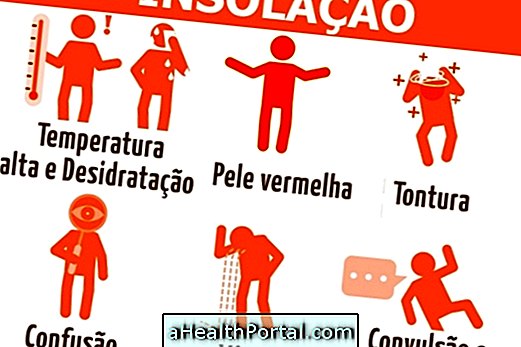Pulmonary embolism occurs when the artery that carries blood to the lungs gets clogged due to a blood clot or air buildup, for example.
Some of the problems that can most often lead to a pulmonary embolism include:
1. Lack of physical activity

When you stand for a long time standing in the same position, as lying down or sitting, the blood begins to accumulate more in a place of the body, usually in the legs. Most of the time, this accumulation of blood does not cause any problem because when the person gets up the blood returns to circulate normally.
However, people who lie or sit for several days, such as after surgery or due to a serious illness such as stroke, for example, have a higher risk of accumulated blood starting to form clots. These clots can be transported through the bloodstream until they clog the pulmonary artery, causing an embolism.
What to do: To avoid this risk one should do exercises with all members of the body every day and change position every 2 hours at least. People who are bedridden, who can not move alone, must be moved by another person, doing exercises such as those indicated in this list.
2. Surgeries

In addition to the postoperative of a surgery to decrease the level of physical activity and increase the risk of clot formation, surgery itself can also lead to a pulmonary embolism. This happens because during the surgery several lesions in the veins happen that can hinder the passage of blood and cause a clot that can be transported to the lungs.
What to do: It is important to complete the entire postoperative period at the hospital to keep the doctor's continuous observation that can work as soon as the first signs of problems arise. At home, the use of medicines prescribed by a doctor, especially anticoagulants such as warfarin or aspirin, is recommended.
3. Deep venous thrombosis

People who suffer from deep vein thrombosis are at high risk of developing clots that can be transported to other organs, such as the brain and lungs, causing serious complications such as embolisms or strokes.
What to do: To avoid complications, follow the doctor's instructions, which usually include the use of anticoagulants. See how the treatment of this problem is done.
4. Air travel

Doing any trip for more than 4 hours, whether by plane, car or boat, for example, increases the risk of having a clot due to the fact that you spend a lot of time in the same position. However, in the airplane this risk may be increased due to differences in pressure that can make the blood more viscous, increasing the ease in forming clots.
What to do: During long trips, such as by plane, it is advised to lift or move your legs every 30 minutes, and drink water regularly to keep blood more liquid.
5. Fractures

Fractures are one of the main causes of pulmonary embolism because when a bone breaks it can cause injury to several blood vessels. These lesions can not only lead to clot formation, but also to the entry of air or fat into the bloodstream, increasing the risk of having an embolism.
What to do: Avoid dangerous activities, such as climbing, and maintain adequate protections in high-impact sports to try to avoid a fracture.
Who is at increased risk of stroke
Although pulmonary embolism may occur in any of the above situations, it is more common in people with risk factors such as:
- Age greater than 60 years;
- Previous history of blood clots;
- Having obesity or being overweight;
- Be a smoker;
- Use pill or do hormone replacement treatments.
Pulmonary embolism is a rare condition, even in people taking the birth control pill; however, it is important to know which signs may indicate this problem. See a complete list of symptoms to watch out for.























